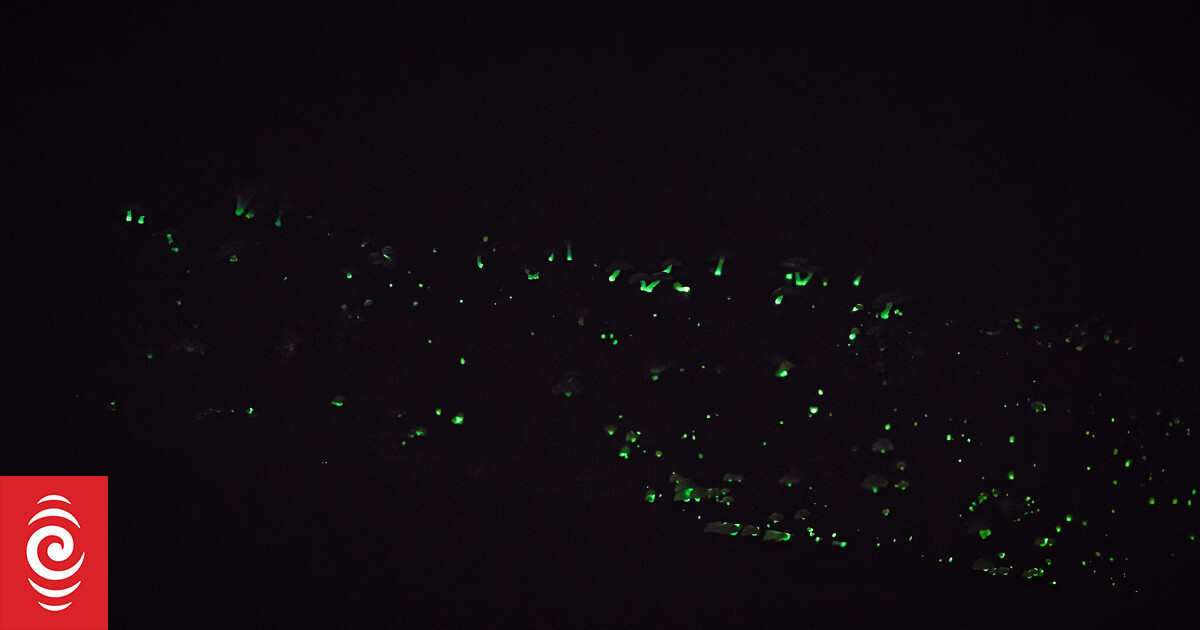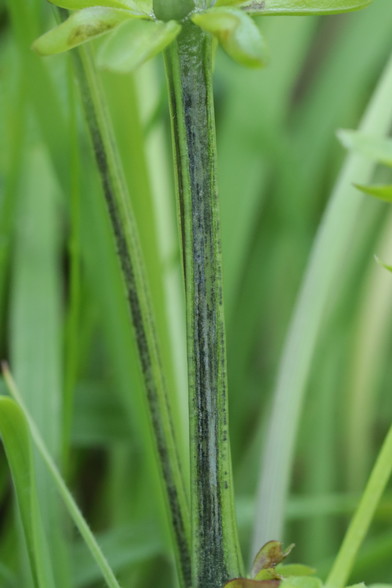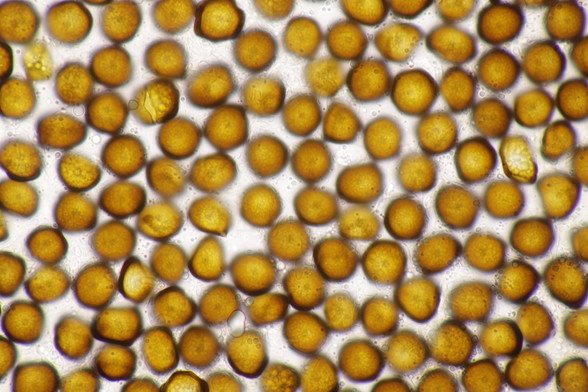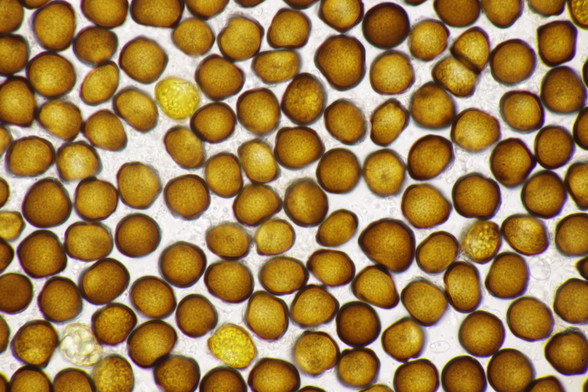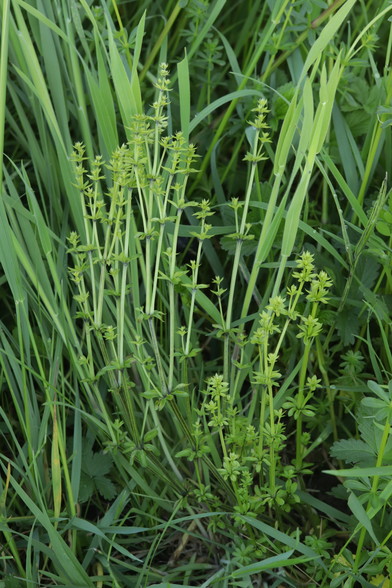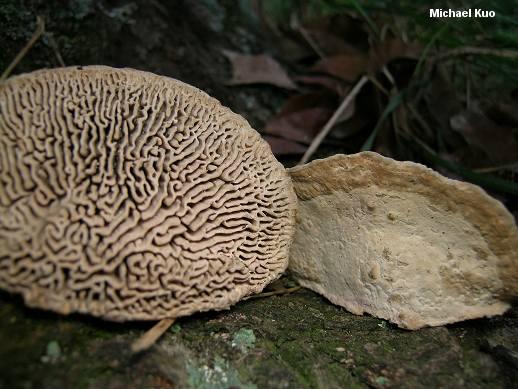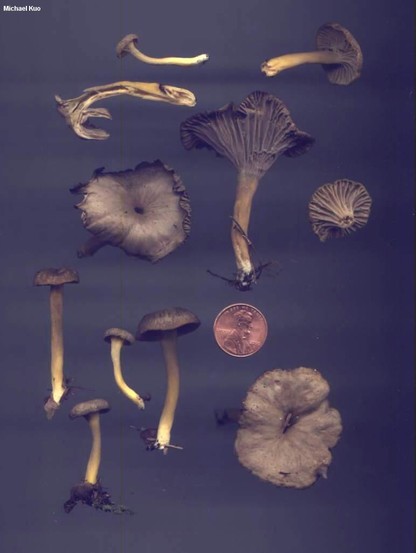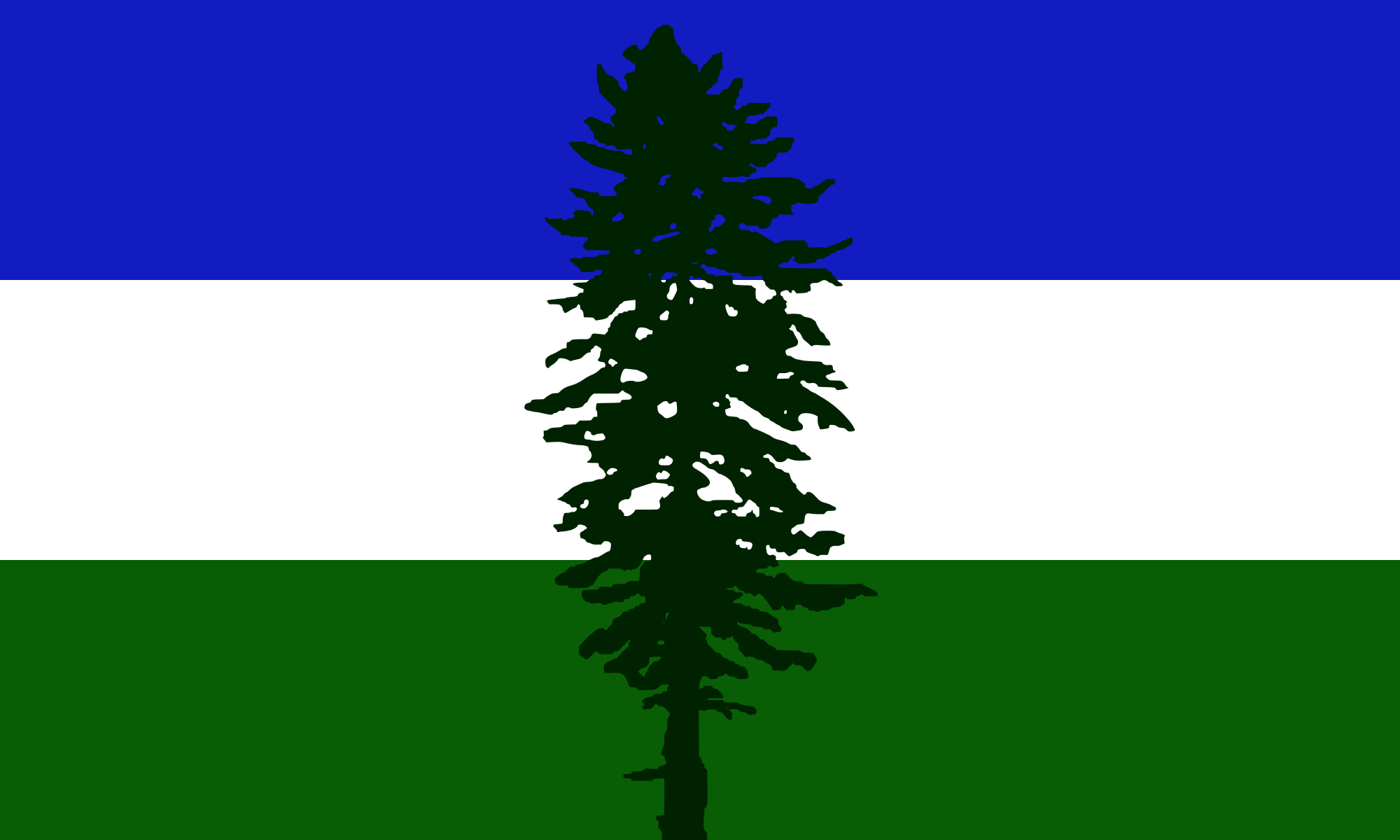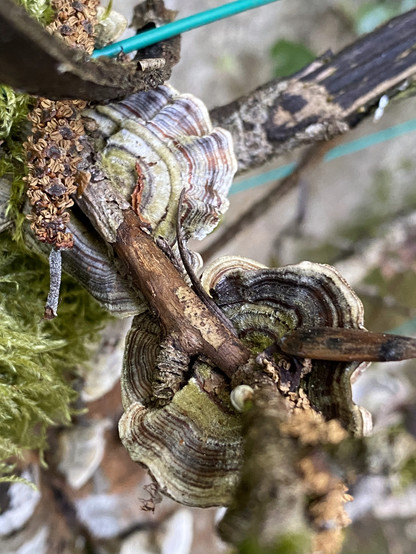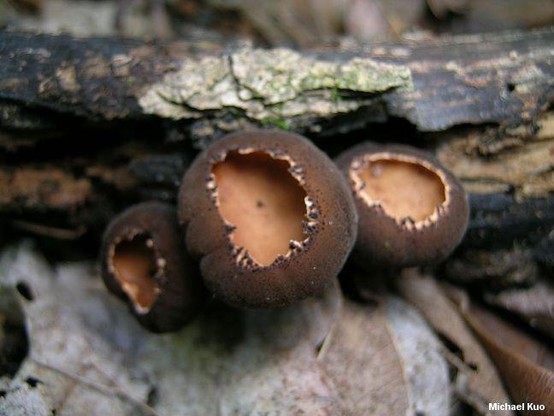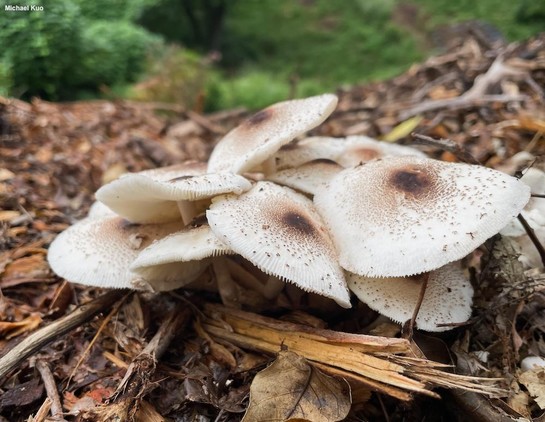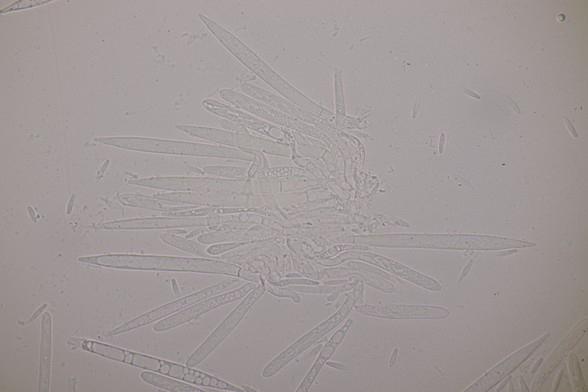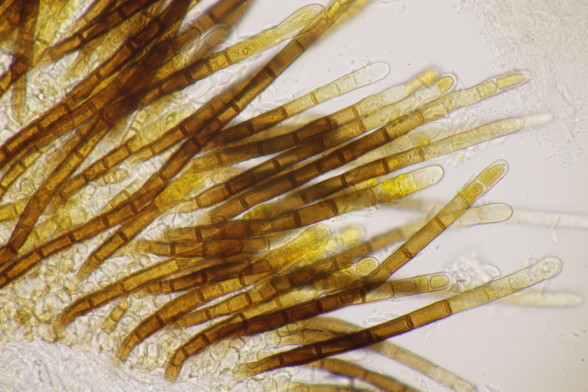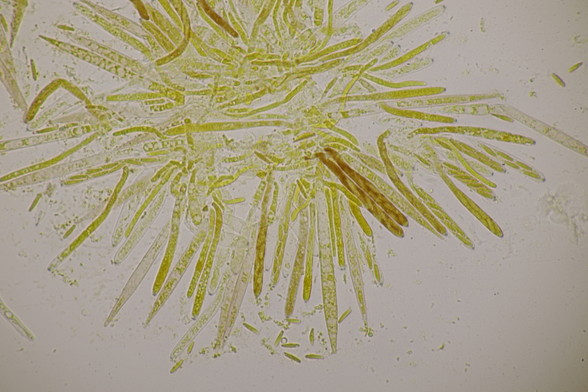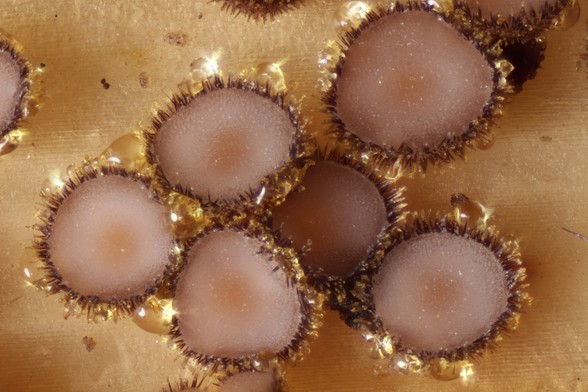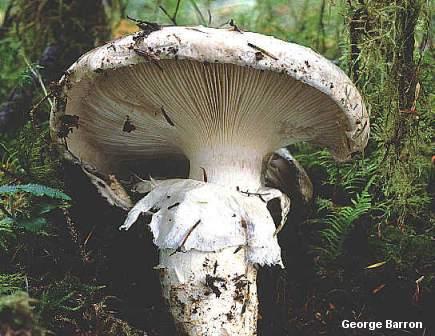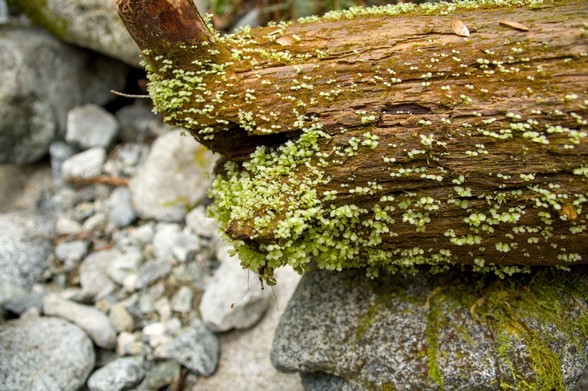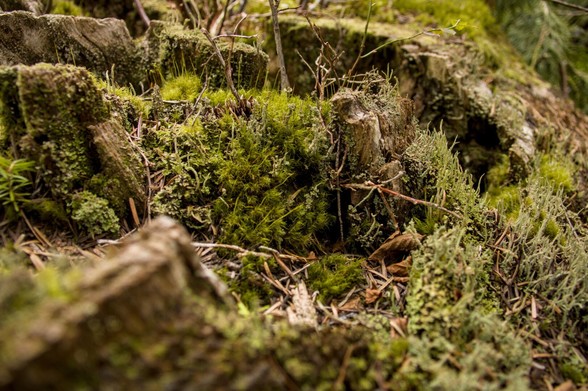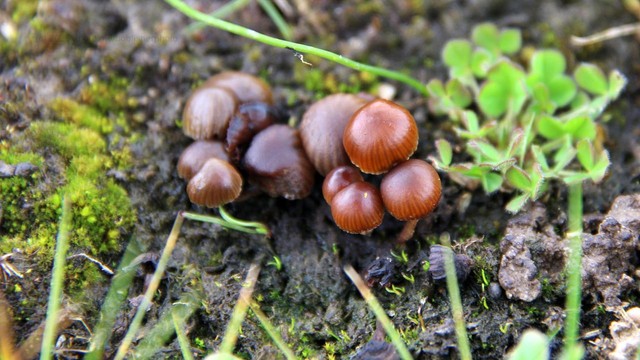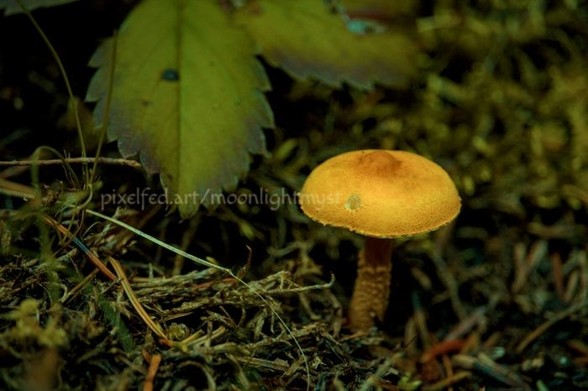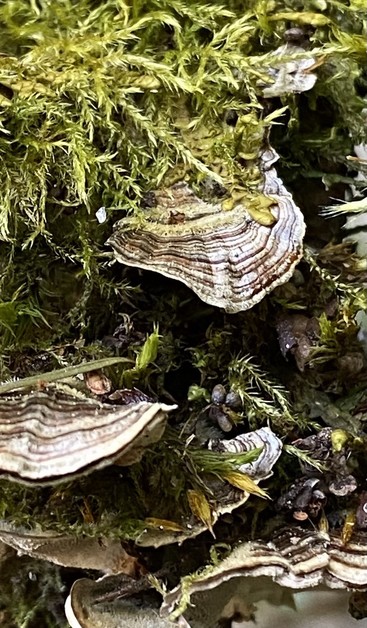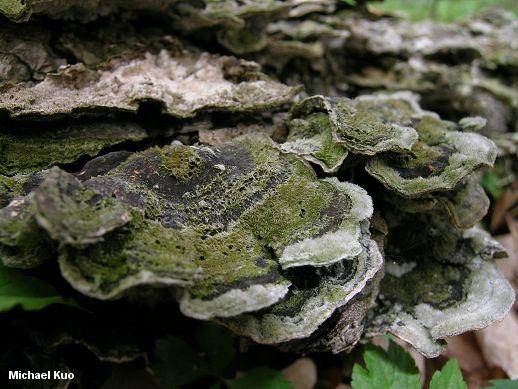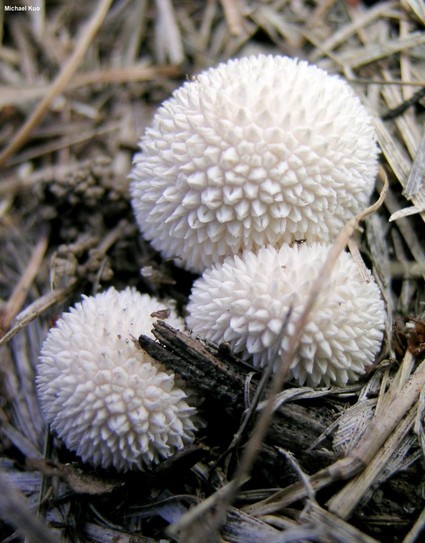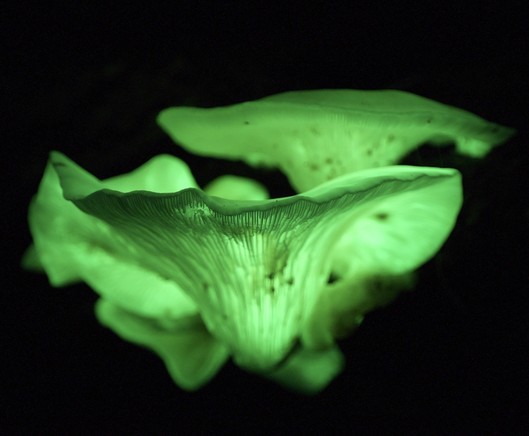Recent searches
Search options
#fungi
Daedalea quercina
https://www.mushroomexpert.com/Daedalea_quercina.html
Ecology: Saprobic; growing alone or in small groups with fused caps on decaying oak wood (occasionally on the wood of other hardwoods); annual or perennial; causing a brown rot of the heartwood; widely distributed in North America, but rare west of the Mississippi.
Cap: 4-20 cm; broadly convex to more or less flat; fan-shaped in outline; dry; smooth or finely fuzzy (generally smoother toward the margin); whitish when fresh, but grayish, brown, or black in age (often darker toward the point of attachment in specimens that are several years old).
Undersurface: Maze-like, with thick walls (about 1-3 mm wide); occasionally developing pore-like or gill-like areas; whitish when fresh, becoming dingy yellowish or pale tan; not bruising; tubes to 4 cm deep.
Stem: Absent.
Flesh: Whitish, or with age brownish; very tough.
Spore Print: White.
Chemical Reactions: All parts dark gray to black with KOH.
Microscopic Features: Spores: 5-6 x 2-3.5 ; smooth; cylindrical to elliptical.
Cantharellus sphaerosporus
https://www.mushroomexpert.com/Cantharellus_sphaerosporus.html
Ecology: Mycorrhizal with conifers, including eastern hemlock; growing gregariously or in loose clusters in moss or on well-decayed, moss-covered logs in conifer bogs; northern North America; summer and fall. The illustrated and described collection is from Michigan.
Cap: 2-5 cm wide; convex at first, soon becoming vase-shaped and eventually becoming perforated on the center; with a wavy and irregular margin when mature; bald; somewhat wrinkled; sticky or waxy when fresh; dark brown, fading to grayish brown.
Undersurface: With well developed, distant false gills that fork near the margin and have very few cross-veins; whitish to yellowish, becoming grayish to yellowish or brownish.
Stem: 3-5 cm long; 3-8 mm thick; more or less equal; becoming hollow; bald; brownish above and dark brownish yellow below; basal mycelium white.
Flesh: Insubstantial; whitish to yellowish or brownish.
Odor and Taste: Not distinctive.
Spore Print: White to yellowish.
Microscopic Features: Spores 7-10 x 6-9 ; subglobose to very broadly ellipsoid; smooth; hyaline in KOH; contents minutely granular. Basidia 4-sterigmate; 75-80 long. Elements of upper surface cylindric; 2.5-7.5 wide; septate; clamped; smooth; brownish to brown in KOH.
Another bit of shelf fungus from the same (former) apple tree. Plus some moss!
Galiella rufa
https://www.mushroomexpert.com/Galiella_rufa.html
Ecology: Saprobic on decaying hardwood sticks and logs; growing alone, gregariously, or (most often) in loose clusters; early summer and summer; apparently widely distributed east of the Rocky Mountains. The illustrated and described collections are from Illinois.
Immature Fruiting Body: More or less cylindric; wrinkled; dark brown to black; hairy; interior gray and gelatinous; developing an apical cavity, enclosed and protected by the lid-like outer surface, in which the hymenium develops; with approaching maturity the cavity ruptures, exposing the hymenium and creating the fringed, pustulate margin.
Fruiting Body: Goblet-shaped to cup-shaped; 2-4 cm across; upper surface concave, orangish to brownish orange, bald; margin incurved, often finely toothed, fringed, or pustulate; undersurface hairy, dark brown to black, running down the pseudostem, becoming somewhat wrinkled with age; pseudostem 1-2 cm long, 3-5 mm thick, terminating in black basal mycelium; flesh gelatinous-rubbery and tough.
Microscopic Features: Spores 17-21 x 8-10 ; ellipsoid or occasionally nearly subfusiform; developing thick (1 ) walls; with guttules in KOH when immature; surface appearing very finely stippled or pitted in both KOH and Melzer's; hyaline. Asci 8-spored; hyaline in KOH and in Melzer's. Paraphyses to about 175 x 2 filiform; cylindric; hyaline. Elements on undersurface of two types: 1) subglobose to pyriform, grayish brown, thin-walled elements 8-10 across, tightly packed and sometimes chained together; and 2) thick-walled (1 ), septate, grayish brown hairs 4-6 wide and often over 250 long.
Leucoagaricus meleagris
https://www.mushroomexpert.com/Leucoagaricus_meleagris.html
Ecology: Saprobic, growing in clusters and gregariously in woodchips or compost; summer and fall; originally described from England (Sowerby 1799); widely distributed but uncommon in Europe and North America; also reported from Asia, Oceania, and South America. The illustrated and described collections are from Ohio.
Cap: 2.5-9 cm across; broadly convex to broadly bell-shaped or nearly flat; dry; brown and bald over the center; mid-zone with fine brown scales over a whitish ground; marginal area with only a few scales, becoming finely lined for about 5 mm; sometimes bruising yellowish, then reddish after up to 24 hours.
Gills: Free from the stem; close or crowded; short-gills frequent; whitish at first, becoming pale lemon yellow; bruising slowly brownish.
Stem: 6.5-15 cm long; 4-8 mm thick at the midpoint; narrowly spindle-shaped, with a tapered base that sometimes roots into the substrate; without a ring, or with an ephemeral, collapsing, brown-edged ring; white and bald above; below with fine brown fibrils and scales; basal mycelium white.
Flesh: White; changing to yellow, then slowly red when sliced, at least in the stem apex.
Odor: Not distinctive.
Chemical Reactions: KOH dark pink on cap surface.
Dried Specimens: Herbarium specimens feature rose pink caps for about a year before becoming brown.
Spore Print: White.
Microscopic Features: Spores 7-12 x 5-7 m; broadly ellipsoid; with a very tiny pore that is not always visible; smooth; walls 1 m thick; hyaline in KOH; inamyloid; at least some spores moderately dextrinoid. Basidia 25-28 x 9-12 m; abruptly clavate; 4-sterigmate or occasionally 2-sterigmate. Pleurocystidia not found. Cheilocystidia 30-70 x 10-18 m; clavate to fusiform or lageniform; often irregularly mucronate; smooth; thin-walled; hyaline in KOH. Pileipellis a cutis with aggregations of upright elements; elements 4-12 m wide, smooth, hyaline to brownish in KOH; apex of most terminal cells bluntly rounded rather than acute. Clamp connections not found.
Craterellus fallax
https://www.mushroomexpert.com/Craterellus_fallax.html
Ecology: Mycorrhizal with oaks, and perhaps with other hardwoods; growing alone, scattered, gregariously, or in loose clusters (only rarely in tightly packed clusters of many mushrooms); often found in mossy areas; spring through fall; widely distributed east of the Rocky Mountains. The illustrated and described collections are from Illinois and Pennsylvania.
Fruiting Body: 1-5 cm wide; 3-9 cm high; without a clearly defined cap and stem; tubular at first, becoming deeply vase-shaped; the upper edge rolled under when young and often partly rolled under in maturity; thin-fleshed.
Upper/Inner Surface: Pale to dark gray; minutely scaly with blackish-tipped scales over a paler, grayish or grayish brown base color; the margin often black.
Under/Outer Surface: Smooth or very shallowly wrinkled; dark gray to black, becoming dull gray with orangish or yellowish tints; darker toward the base; basal mycelium white.
Flesh: Thin and brittle; gray to blackish.
Odor and Taste: Taste mild; odor not distinctive, or somewhat fragrant.
Chemical Reactions: KOH negative on all surfaces.
Spore Print: Pale pinkish orange.
Microscopic Features: Spores 10-15 x 7-10 ; broadly ellipsoid; smooth; hyaline in KOH; contents homogeneous. Basidia 60-70 long; 2-sterigmate, or occasionally 3-sterigmate. Hymenial cystidia not found. Elements of upper surface cylindric; septate; hyaline to brownish; 5-20 wide. Clamp connections absent.
Catathelasma ventricosum
https://www.mushroomexpert.com/Catathelasma_ventricosum.html
Ecology: Presumably mycorrhizal; growing alone or scattered on the ground under conifers; fall; northeastern North America (but reported from the Rocky Mountains and the West Coast; see above).
Cap: 8-30 (or more) cm; convex becoming irregularly convex or nearly flat; dry; smooth or in maturity with scattered pressed-down fibers; whitish, developing grayish areas; the margin at first rolled under somewhat.
Gills: Running down the stem or beginning to do so; close; whitish.
Stem: Up to 15 cm long and 5 cm wide; often swollen in the middle; tapering at the base and usually rooting somewhat; sometimes almost completely underground; whitish, discoloring brownish or grayish; with a flaring, double ring.
Flesh: White; hard; not changing on exposure.
Odor and Taste: Taste not distinctive or slightly unpleasant; odor similar.
Spore Print: White.
Microscopic Features: Spores 9-13 x 4-6 ; smooth; elongated-elliptical; amyloid. Basidia under 45 long.
Hongo de estiércol, emergiendo en una húmeda Primavera.
https://eu.zonerama.com/bobfisherphoto/Photo/12994074/528127261
Went to a seminar today on growing oyster mushrooms at home. I now have a happy little block of substrate and spawn. Maybe in a month I can tell you I have mushrooms.
Cerrena unicolor
https://www.mushroomexpert.com/Cerrena_unicolor.html
Ecology: Saprobic on the deadwood of hardwoods (very rarely reported on conifers); causing a white rot; annual; growing in overlapping clusters; found year-round; widely distributed in North America but rare or absent in the Southwest.
Fruiting Body: Sometimes lacking a cap (especially when growing on the undersides of logs), appearing like a pore surface that lost its mushroom, but more commonly with a kidney-shaped to fan-shaped cap 3-10 cm across; upper surface velvety to hairy, whitish to brownish but often appearing green from algae; usually with concentric zones of texture and/or color.
Pore Surface: Whitish when young, becoming gray; pores maze-like or slot-like, becoming tooth-like with age; tubes to 4 mm deep.
Flesh: Whitish; with a dark line just beneath the cap surface; leathery.
Spore Print: White.
Microscopic Features: Spores 5-7 x 2.5-4 ; smooth; long-elliptical; inamyloid; hyaline in KOH. Hyphal system trimitic.
Lycoperdon curtisii
https://www.mushroomexpert.com/Lycoperdon_curtisii.html
Ecology: Saprobic; usually growing in tight clusters; found in grass, often in disturbed-ground areas like ditches—but also sometimes appearing on woodchips in landscaping areas; late summer and fall; widely distributed in North America. The illustrated and described collections are from Illinois.
Fruiting Body: Shaped like a small ball, 1-3 cm across, but frequently contorted as a result of clustered growth; densely spiny when young; spines 1-2 mm long, often joined at their tips, easily rubbing off; in maturity often fairly smooth, with a powdery coating; white becoming pale brownish; developing a small hole at the top, through which spore dust escapes; appearing pinched together at the bottom; with a white, fleshy interior at first; later with yellowish to olive granular flesh and eventually filled with brownish or purplish brown spore dust; base attached to white rhizoids.
Microscopic Features: Spores 2-3 m; globose; minutely echinulate; hyaline in KOH; occasionally featuring a 1-2 m pedical. Capillitial threads 3-5 µm; wide; branching; mostly thin-walled and hyaline in KOH.
Ghost fungi aglow in the forests of south east NSW. So much fun shooting these


